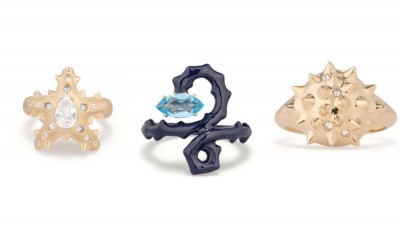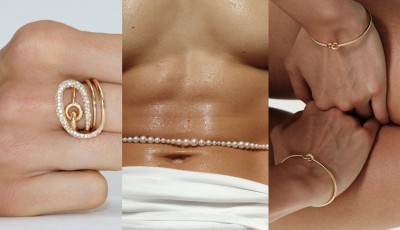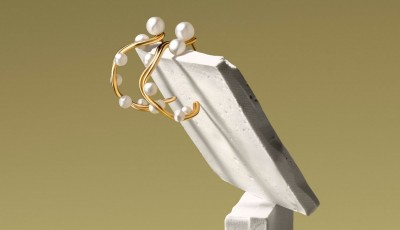THE TALK: Promote Made in Italy Abroad and Become Sexier
Licia Mattioli, Vice President of Confindustria delegated to Internationalization and MD of Mattioli spa, outlines the context for relaunching SMEs and Made in Italy after the crisis
«We have made the chef’s job sexy, now we need to make owning jewelry sexy». A formula that could be achieved, according to Licia Mattioli, Vice President of Confindustria delegated to Internationalization and Managing Director of the homonymous brand in Turin, Mattioli spa.
While it is still impossible to make a true estimate of the damage caused by the Covid-19 emergency, can we foresee the impact that it will have on the market? Let’s start from China, the only figure available at the moment and the first country to emerge from this crisis. In its slow recovery, the Chinese market is recording a reduction in industrial production of about 13.5% (economists had forecast a more moderate drop of around 3%) and considering that pre-Covid China had a growth rate of about +7.5%. Now we are translating the numbers in Italy with a pre-crisis GDP growth-rate of +0.1%. With a starting point of this kind, the impact will be devastating for us. By starting from an extremely low figure, the consequences will be decidedly worse. Additionally, it should be remembered that, compared to other Italian companies, the jewelry sector closed practically immediately (Mattioli Spa stopped production 4 days earlier than the actual sector was ordered to, ed.), so the impact of the crisis on the jewelry world is much stronger than on other sectors. How can we limit the damage? Unfortunately, there is not much we can do now. With stores closed in many countries worldwide, it is difficult.
We started by mentioning some numbers relating to China. Just today, Confindustria’s Research Center issued its report entitled ‘Forecasts for Italy. Which conditions for maintaining and relaunching the economy'. An analysis which starts from the idea that, in the manufacturing sector in general, the acute phase of the health crisis should be over by halfway through the second quarter of the year. In this case, the estimated fall in GDP in the second quarter, compared to the end of 2019, would be 10% with a reboot in the second semester that would, in any case, be slowed down by a weakness in demand for goods and services. This figure would worsen should the crisis continue beyond the date taken into consideration.
In general, a -6% reduction in GDP is foreseen for 2020 hypothesizing that the acute phase of the emergency finishes at the end of May, with an extra 0.75% for every further week of blockage. Any comment? The problem is that factories may no longer reopen... And this is not taken into account...
Let’s go back to jewelry. One of the most frequent topics during these days is reaping an opportunity from this crisis in order to reflect on business logics. Given that the jewelry world has always been a world unto itself, when you are dealing with big companies, you can revise the business model but it is very difficult to do with small ones. And when a gold-jewelry sector that counts an average of 5 workers per company with exports of around 85%, what more can be done? It is hard to intervene on the business model in these conditions, it is almost a contradiction in words. Nevertheless, I continue to sustain what I have said repeatedly, regardless of the crisis, or rather, that, now more than ever, all the jewelry companies need to group together. Crisis situations make you think that, when companies are small, they are more vulnerable. You just have to think in terms of systemizing, you cannot stay 'micro'. There is, however, a critical point to make: not only is there little dialogue between the various gold districts in our country, it is even hard to talk within the district itself, even if I have seen many changes in this respect lately, especially among the Valenza community where synergies between companies have historically been difficult. The competitor is not inside the district, it is outside now. This is why collaboration is the only exit road.
A photograph of production companies but one which can also be valid for sales points that are currently so much in the spotlight, with the huge problem linked to an extremely high drop in consumption.
What actions need to be taken to get people back in the stores? Jewelry is currently experiencing a moment of disinterest in Italy because our country has different priorities in terms of consumption. In Italy, demand for jewelry hardly exists, not even for important occasions. What to do and how? Let’s make jewelry sexy again and look outside, look abroad to places where jewelry has a lot more appeal. But, if we want to speak of economics, there are two ways to emerge from this crisis. The U curve, the riskiest, or the V curve, which is what the economists are talking about at the moment. It indicates a brusque and violent descent, but a just as fast and speedy recovery (this is what happened in China where jewelry consumption is, generally, high). Our sector is going through a period of radical change and, in Italy, we cannot think of selling jewelry as we did 100 years ago. I repeat, let’s make it sexy, starting from the emotive model, from jewelry that is treasured, that is handed down and, in a time of considerable imbalance, lets also think of its intrinsic value and as jewelry as a safe haven.
I launch you a challenge. In regard to re-considering business logics and strategies, might we perhaps consider using up stock, the ‘warehouse’, before releasing goods onto the market? It is an idea. But I don’t see it in the sense of re-proposing old stylistic models that nobody would buy. Unlike other worlds, fashion, for example, jewelry companies have an advantage. We can count on retrievable raw materials, such as metal. Let’s go to work on the stock, eliminate the ‘corpses’, retrieve the metals and plump up the cash boxes with the liquidity we need. The digital communication theme is, however, on a different front. A moment of production standstill and frozen consumption offers the chance to activate other leverage in order to stay alive and consolidate relations with your end customer. First of all, by nurturing desire and dreams through targeted initiatives. Unfortunately, on the theme of sales, e-commerce will not compensate for the losses that the standstill has caused to the physical store. Compared to the rest of goods and services, jewelry is already behind in terms of on-line sales. We will get there too, but it is difficult. If you have a brand, it is a different question and much easier. In general, however, jewelry is the least branded asset in the world (only about 25% of the industry is made up of brands) and if it already struggles, I would now advise exploiting e-commerce in order to stay in people’s minds.
What is the re-launch formula for emerging from this crisis? I believe that, as we are doing for Made in Italy in general, we need to activate international promotion initiatives specifically for jewelry and we are already working with the Ministry of Foreign Affairs to this regard.






